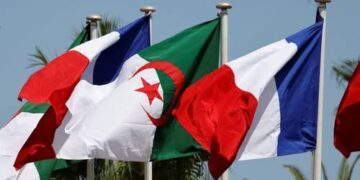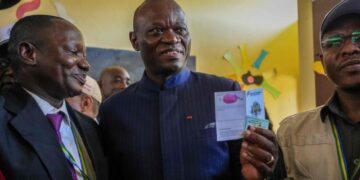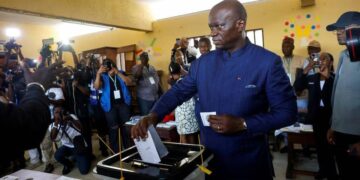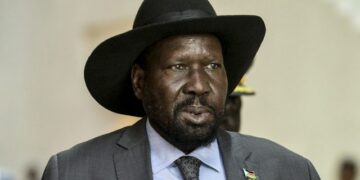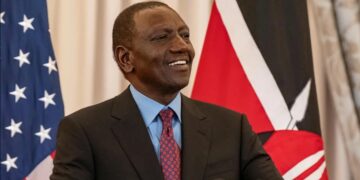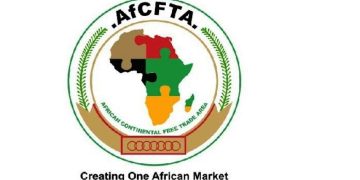Kenya has taken a bold step toward reducing dependence on the US dollar and other foreign currencies in trade with the introduction of a pan-African payment system, aligning with President William Ruto’s vision for financial independence across Africa.
Kenyan businesses can now access the system, which is backed by the African Union (AU) and the African Export-Import Bank (Afreximbank).
Launched in January 2022, the Pan-African Payments and Settlement System (PAPSS) acts as a central mechanism for handling payments and settlements within the continent.
“Effective immediately: customers of banks connected to PAPSS can send money to Kenya. It is faster, safer, and cheaper,” the platform announced upon its recent rollout.
Countries already using the system include Nigeria, Liberia, Sierra Leone, Ghana, Guinea, Gambia, Kenya, Djibouti, Zimbabwe, and Zambia, with efforts underway to expand access to all African nations.
By allowing businesses to trade in their national currencies, PAPSS eliminates the need for costly currency conversions, a significant benefit given that Africa has 42 different currencies.
Previously, a Kenyan trader purchasing goods from Uganda would have had to process the payment using a foreign currency such as the US dollar, euro, or British pound, adding extra costs and delays.
The introduction of PAPSS streamlines transactions, making it possible for businesses in Kenya and neighbouring countries to settle payments instantly without converting their money into hard currencies.
Supporters believe this system will make trade across Africa more efficient, reducing transaction costs and barriers.
“We are all struggling, and our traders face challenges making payments for goods and services between countries due to currency differences. Why are we introducing dollars into our trade?” President Ruto asked during a recent African Continental Free Trade Area (AfCFTA) dialogue with private sector leaders in Nairobi.
He pointed out that payment bottlenecks have hindered businesses, slowing down trade and economic growth within Africa.
“It should be possible for us to sell, do business and trade with African countries without minding their currencies,” he stated.
According to President Ruto, AfCFTA has already created a unified African market with immense potential.
“That is the possibility that the pan-African payment system gives us, and Kenya will champion it so that we eliminate the roadblocks and hurdles that businesses and entrepreneurs face.”
PAPSS was developed through a collaboration between Afreximbank and the AfCFTA Secretariat.
Outgoing Afreximbank President Benedict Oramah, who played a leading role in launching the platform, highlighted its potential to revolutionize trade across the continent by saving African businesses an estimated $5 billion (about Sh645 billion) annually in transaction fees.
“The Pan-African Payment and Settlement System is operational. It will save the continent $5 billion in intra-African transfer costs,” said Prof Oramah.
“It will also expedite payments for intra-African trade using African currencies.”
By allowing direct currency exchanges between African nations, the system seeks to reduce costs and improve the speed of trade settlements.
Currently, many African businesses and banks rely on financial institutions outside the continent to process payments between African currencies, often using the US dollar or euro. This dependency has put significant strain on African Central Banks due to constant foreign exchange demands.
PAPSS aims to resolve these challenges, reinforcing intra-African trade under the AfCFTA framework.
The system is overseen by African Central Banks, which manage its governance and daily operations. It is headquartered in Cairo, Egypt. PAPSS strictly facilitates transactions in legal tender and does not support digital assets, cryptocurrencies, or Central Bank Digital Currencies.
Historically, the US dollar has played a dominant role in trade between African countries. Whether Kenyan businesses are dealing with partners in Djibouti or elsewhere on the continent, they have often had to use the American currency, complicating transactions.
PAPSS could ease this burden by eliminating the need for currency conversions into dollars, reducing pressure on local economies.
Central Bank of Kenya (CBK) Governor Kamau Thugge has previously stated that the system comes at the right time and could help address foreign exchange shortages.
He noted that the platform will offer Kenyan businesses more opportunities to benefit from AfCFTA.
As of June 2022, PAPSS had onboarded eight central banks, 28 commercial banks, and six payment processing firms. While all central banks were expected to have joined by the end of that year, commercial banks have until 2025 to integrate into the system. CBK had yet to sign up.







